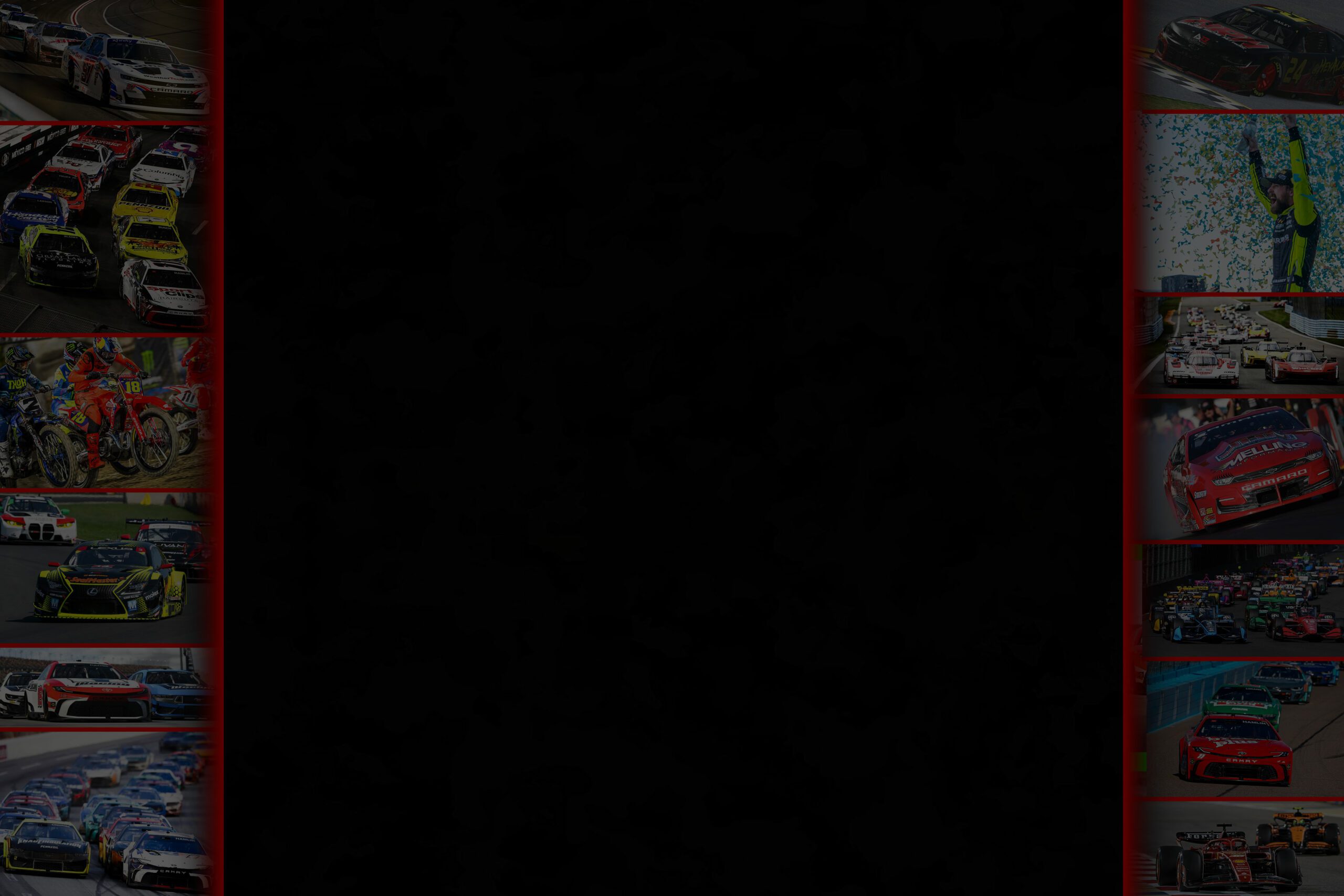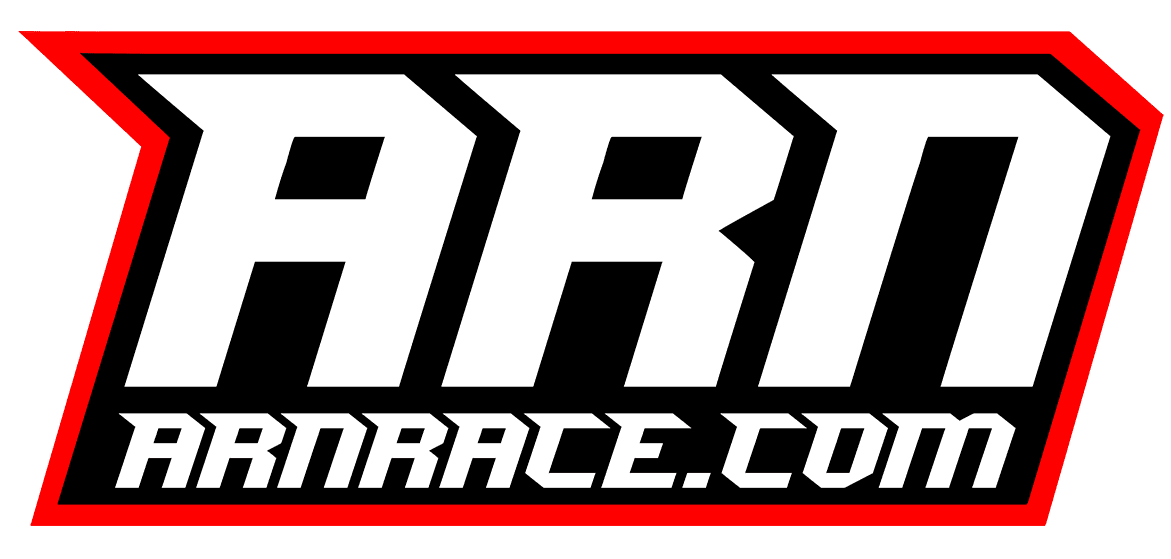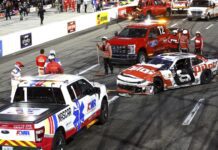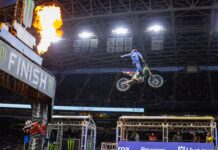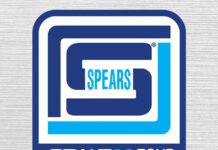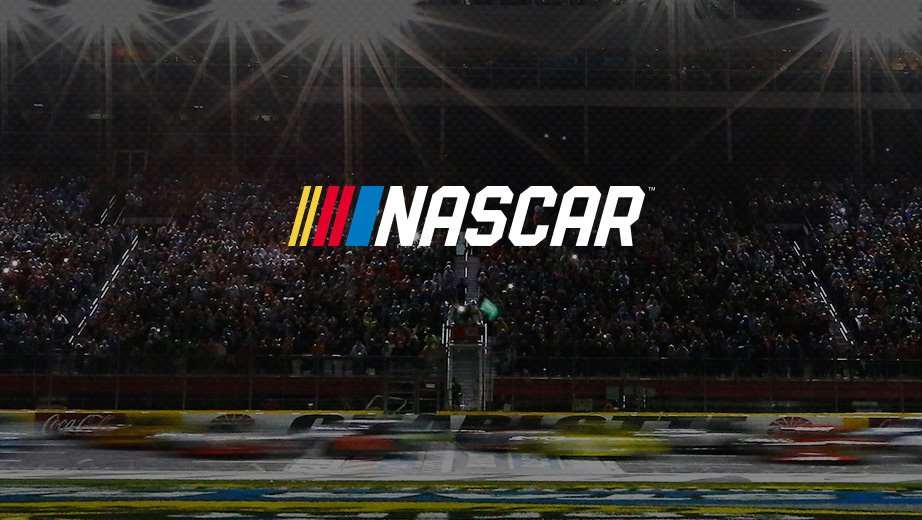NASCAR has issued updates to its rulebooks for all three national series.
A noteworthy update for all three series involves allowing drivers to wear biometric devices in the cockpit
For the Monster Energy NASCAR Cup Series and Xfinity Series there are changes in restrictor-plate hole size, roof hatch requirements and toe board energy material requirements.
The only change exclusive to the Cup Series is rear spoiler height.
Driver Biometrics (Cup, Xfinity, Trucks)
Driver biometric devices are now permitted to be worn in the vehicle provided they do not have telematics capability and operate on their own internal battery power.
The devices can’t connect to any vehicle electrical system (e.g. vehicle battery, ECU, digital dash display, etc.). Data generated by the device can only be stored within the device itself. External data loggers are also not permitted.
The data stored on the driver biometric device will not be permitted to be downloaded during qualifying or a race.
It is the team’s responsibility to make sure the biometric device is suitable for use in the driver’s cockpit.
In order for a device to be eligible for use, it must either be listed on NASCAR’s approved driver biometric device list or be similar in functionality to the devices listed.
NASCAR may allow additional biometric devices to be used in special circumstances if required by the driver’s doctor. If the need arises, the driver and team must notify the senior vice president of competition in advance of a race and provide the specifications and any special requirements of the biometric device.
Rear-spoiler height (Cup)
In 2016, the Cup series ran a rough draft of the 2017 aero package at both Michigan races and at Kentucky Speedway. That package featured a rear spoiler that was 2.5-inches tall, down from 3.5 inches. In 2017, the spoiler will be 2.35 inches tall.
Roof hatch (Cup, Xfinity)
An emergency roof hatch for driver exit is now mandatory at all superspeedway events, after being optional last season. The roof hatch remains optional at all non-superspeedway tracks.
Restrictor-plate hole size (Cup, Xfinity)
The size of the holes in restrictor plates used at Daytona and Talladega will now be 7/8ths of an inch, a change from 57/64ths of an inch.
Toe board energy absorbing material (Cup, Xfinity)
NASCAR now requires teams to use toe board energy absorbing material at superspeedway races in order to strengthen the driver foot box. The measure, an answer to Kyle Busch‘s leg injuries in the 2015 Xfinity Series opener at Daytona, was previously optional.
The absorbing material adds approximately 20 pounds to the car’s weight. NASCAR has raised the minimum weight of cars the same amount in order to encourage teams to use the material at non-superspeedway tracks.
